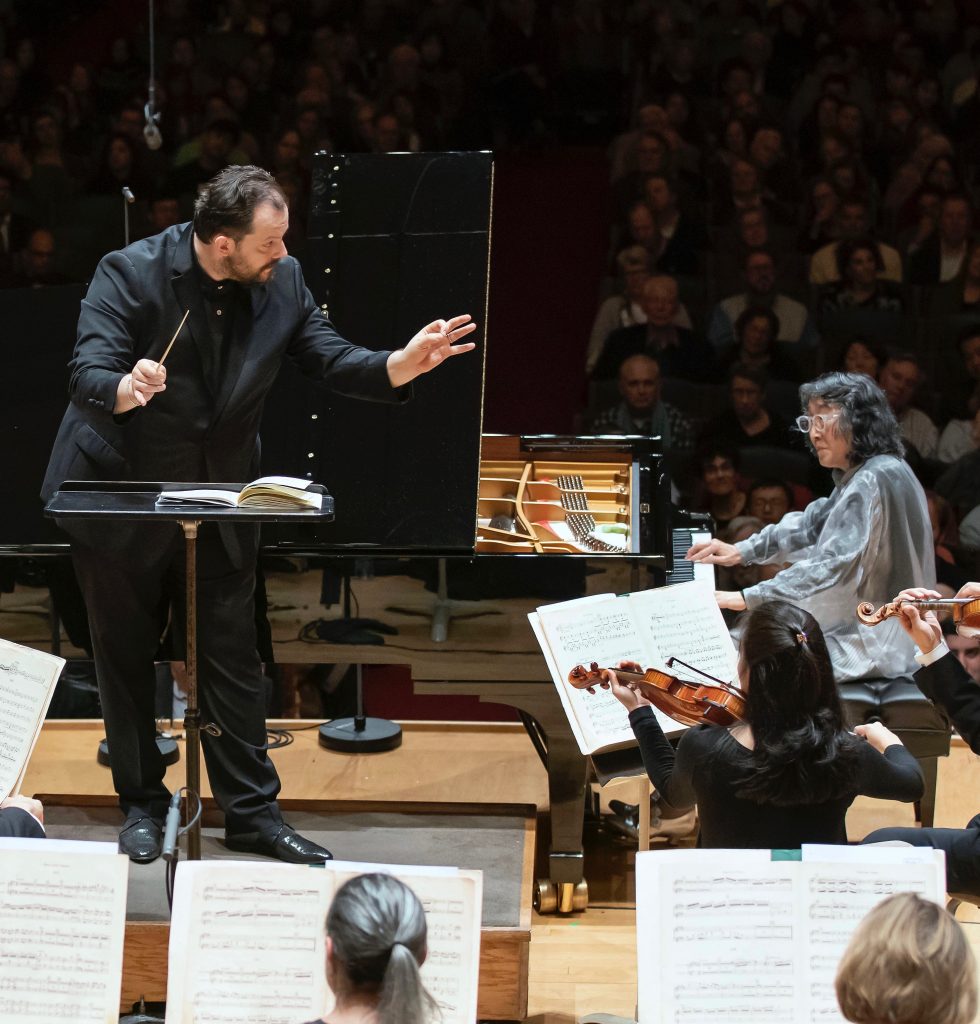Shostakovich pays his party dues in BSO’s “The Year 1917”

It remains fashionable to believe that some of Shostakovich’s symphonies are secretly critical of the Soviet regime. Yet his Symphony No. 12, The Year 1917, shows a composer happy to fall in line.
In 1960, a year prior to the symphony’s completion, the composer officially joined the Communist Party, a decision he revealed to neither family nor friends. He offered a special greeting in Pravda, the party’s propaganda mouthpiece: “On May Day 1960,” he exclaimed, “I already hear the music of communism.”
Such music was the focus of Thursday night’s Boston Symphony Orchestra concert at Symphony Hall. Continuing his multi-season survey of the composer’s symphonies, Andris Nelsons led a shattering reading of the Twelfth that revealed the power and simplicity of a political message that has not aged well.
Cast in four movements that are connected without pause, the Twelfth Symphony is an unabashed ode to Vladimir Lenin. The dark, sweeping music — attractive in its own right — evokes the conflict of the October Revolution, Lenin’s heroic struggle to establish a utopian state, and the hope of a people seemingly free from ancient tyrannies. Missing from this music are the sarcastic allusions, which have provided the stuff for popular Western interpretations of the composer as cynic. With the Twelfth Symphony, Shostakovich comes off as an unapologetic party toady.
He achieved his hagiographic vision by relying on a Beethoven trope — the musical journey from tragedy to triumph. Brooding themes in the strings set the stage in Revolutionary Petrograd — the scene of the first movement—that unfold into stark statements in the full orchestra. The second movement, named for Lenin’s estate in Razliv, is a desolate soundscape where solo winds briefly tilt the music towards light. A brief Scherzo brings sudden urgency before the final movement builds the opening theme into a triumphant conclusion that feels hard won. Through struggle, this product of Socialist Realism suggests, one can find ultimate destiny.
Nelsons led with a firm feel for the brooding intensity that courses throughout the symphony’s 40 minutes. His brisk tempos delivered biting energy to the outer movements, with timpani and snare drum supplying martial drive. The inner movements proceeded more searchingly: As cellos and basses thumped out resonant pizzicatos, lines played by solo French horn and trumpet offered brief moments of repose in an otherwise bleak passage.
A similar intimacy also marked Nelsons’s reading of Betsy Jolas’s Letters from Bachville, which opened the concert. Commissioned by the BSO and Leipzig Gewandhaus Orchestra, Letters from Bachville, which received its American premiere Thursday night, was inspired by the city of Leipzig. Mosaic in structure, the piece weaves together various quotations of Bach — the city’s most famous musician — within a dissonant framework that is never jarring.
Jolas avoids grand gestures, opting instead to unfold her material as a series of isolated moments in a work that ran about 14 minutes on Thursday. She achieves her bare textures by treating the orchestra as a large chamber ensemble: small groups of winds and strings toss about the Bach quotations against subtle but sizable percussion forces; and stinging chords punctuate stretches of music that rarely rise above a whisper. The effect is mesmerizing, and the ear is drawn to every shift in color.
Nelsons and the orchestra rendered Jolas’s music with the gentleness of friendly conversation. When the 93-year-old composer made her way to the stage for bows, the audience rewarded her with a standing ovation.
The evening’s soloist, pianist Mitsuko Uchida, delivered a glowing Piano Concerto in G by Ravel. Hailed for her musical sensitivity and fresh interpretations of Mozart, Uchida approached Ravel’s blazing concerto with similar delicacy. The work’s knuckle-busting runs moved fluently under her fingers, yet the pianist found the contemplative nuance locked within the Gershwinesque sweeps and bluesy turns that make up much of this score.
The gem of this setting was the central movement, which Uchida performed with hushed radiance. The movement’s gentle waltz bears a Satie-like simplicity but the pianist played it as if it were a Mozart Adagio, each phrase rising and falling like breath.
Nelsons was a sympathetic partner throughout, drawing supple lines that complemented Uchida’s figures in both the bold and tender passages. Robert Sheena’s English horn solo in the second movement provided a lyrical highlight in a reading marked by grace and elegance.
The program will be repeated 1:30 p.m. Friday and 8 p.m. Saturday and Tuesday at Symphony Hall. bso.org; 888-266-1200
Posted in Performances